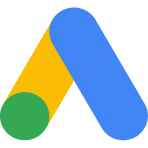Most Shopify merchants evaluate their Google Ads performance based on revenue, ROAS, and a few surface level signals. The problem is that these metrics never reveal whether a campaign is actually profitable.
When multi product carts, inconsistent costs, and inaccurate item level tracking get involved, revenue alone becomes a misleading story.
This guide explains how Conversions with Cart Data and cost of goods sold come together to provide true profitability insights that merchants can actually use.
![]()
Key takeaways from this guide:
Revenue only reporting hides unprofitable campaigns even when ROAS looks strong.
Conversions with Cart Data shows exactly which products were purchased after each ad click.
Product Profit reporting requires COGS in the product feed and item level tracking that matches those IDs.
When CwCD and COGS are combined, Google Ads can calculate product level gross profit and margin.
Analyzify ensures clean item level purchase data so the entire setup works consistently for Shopify stores.
Bonus: Learn how to optimize your Shopify ad spend across Meta, TikTok, and Google Ads
Why Revenue Only Reporting Misleads You in Google Ads
Revenue and ROAS may look like reliable indicators of your ad performance, but they ignore the most important question: did you actually make profit from the sale. When product costs are missing, a campaign can appear strong while generating little or no margin.
Revenue Does Not Include Product Costs
Google Ads shows how much the order was worth, but it has no visibility into how much each item cost you to sell. Without this information, the campaign outcome is incomplete.

A high ROAS can still hide low or negative profit.
Thin margin products can inflate results without adding real value.
You cannot evaluate performance without item level cost data.
You Cannot See Which Products Drove the Sale
A user may click an ad for one product but purchase something completely different. Revenue only reporting does not reflect this shift in behavior.
Google attributes the entire order value to the clicked ad, even if most revenue comes from other items.
You cannot identify the actual products purchased inside the order.
High value cross sells remain invisible, limiting your ability to understand true performance.
Margin Differences Stay Hidden
Different products contribute different levels of profit, but revenue alone treats them equally. This leads to misleading decisions when you scale or adjust campaigns.
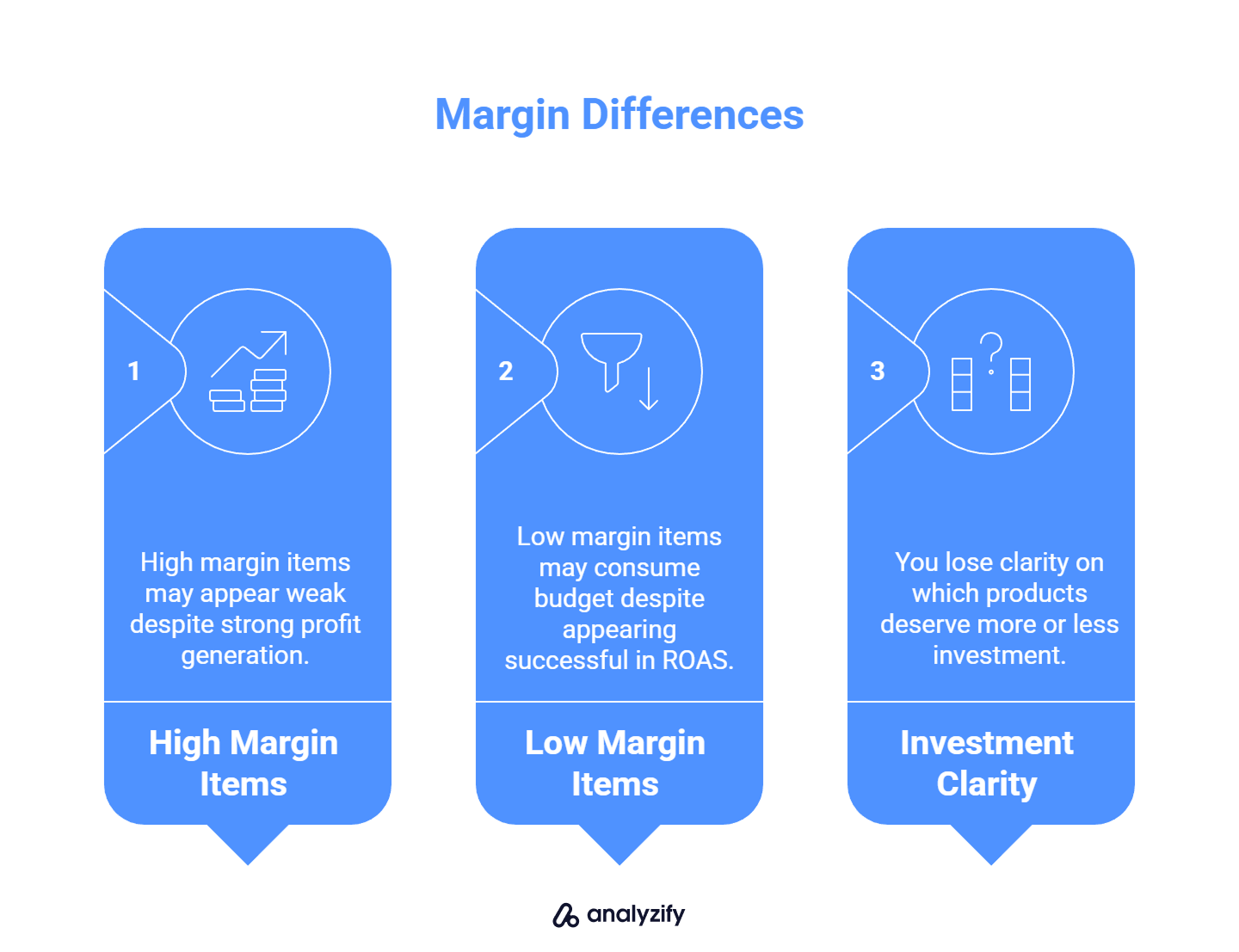
High margin items may look weak even though they generate strong profit.
Low margin items may consume budget despite looking successful in ROAS.
You lose clarity on which products deserve more or less investment.
 Built for Shopify · Refund Tracking · Accurate ROAS
Built for Shopify · Refund Tracking · Accurate ROAS High return rates? GA4 can’t show you the damage
Analyzify captures Shopify refunds and delivers them into GA4 with server-side tracking - so your numbers finally match reality.What Conversions with Cart Data Actually Solves
Conversions with Cart Data gives you the product level detail that standard Google Ads conversion tracking cannot provide. Instead of only seeing the total order value, you see exactly which items were purchased and how they relate to the ad click. This section focuses on the specific gaps CwCD fills.
You See the Exact Products Sold After Each Click
CwCD tells you which items were included in the order, not just the value of the order as a whole. This clarity helps you understand what your ads actually drive.
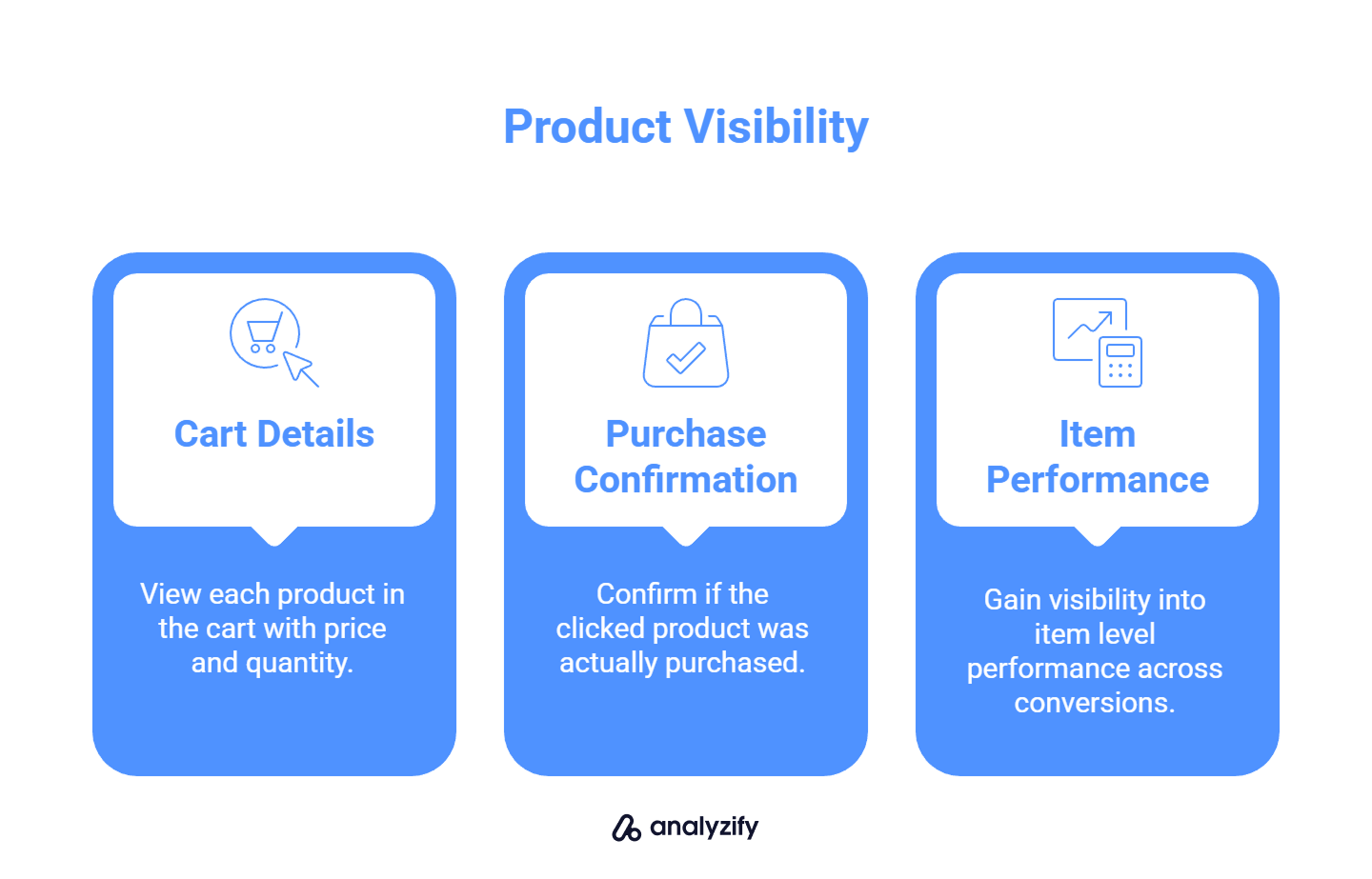
You see each product in the cart with its price and quantity.
You can confirm whether the clicked product was purchased or not.
You gain visibility into item level performance across all purchase conversions.
You Can Separate Lead Sales and Cross Sell Sales
Google distinguishes between the product that was advertised and the products that were actually sold. This gives you insight into how users behave after they land on your site.
Lead sales show the value of the product featured in the ad.
Cross sell sales show the value generated by other items in the same cart.
You can identify products that consistently create larger baskets or higher order values.
You Get Cart Level Performance Metrics
CwCD adds several metrics that allow you to interpret order quality with much more depth than standard conversion tracking.

Number of items purchased per order
Total revenue excluding discounts
Average order value and average cart size
CwCD gives you product level visibility, but it still does not show whether those products were profitable.
 Professional Implementation & Migration Included
Professional Implementation & Migration Included Track forms on Shopify with Analyzify
Track newsletter signups, contact forms, and leads - with no coding required.Why CwCD Alone Cannot Show Profit
Conversions with Cart Data gives you the full list of products sold, but it still does not know the cost of those products. Google Ads cannot calculate profit unless it can match each purchased item with its cost, and that information does not come from CwCD.
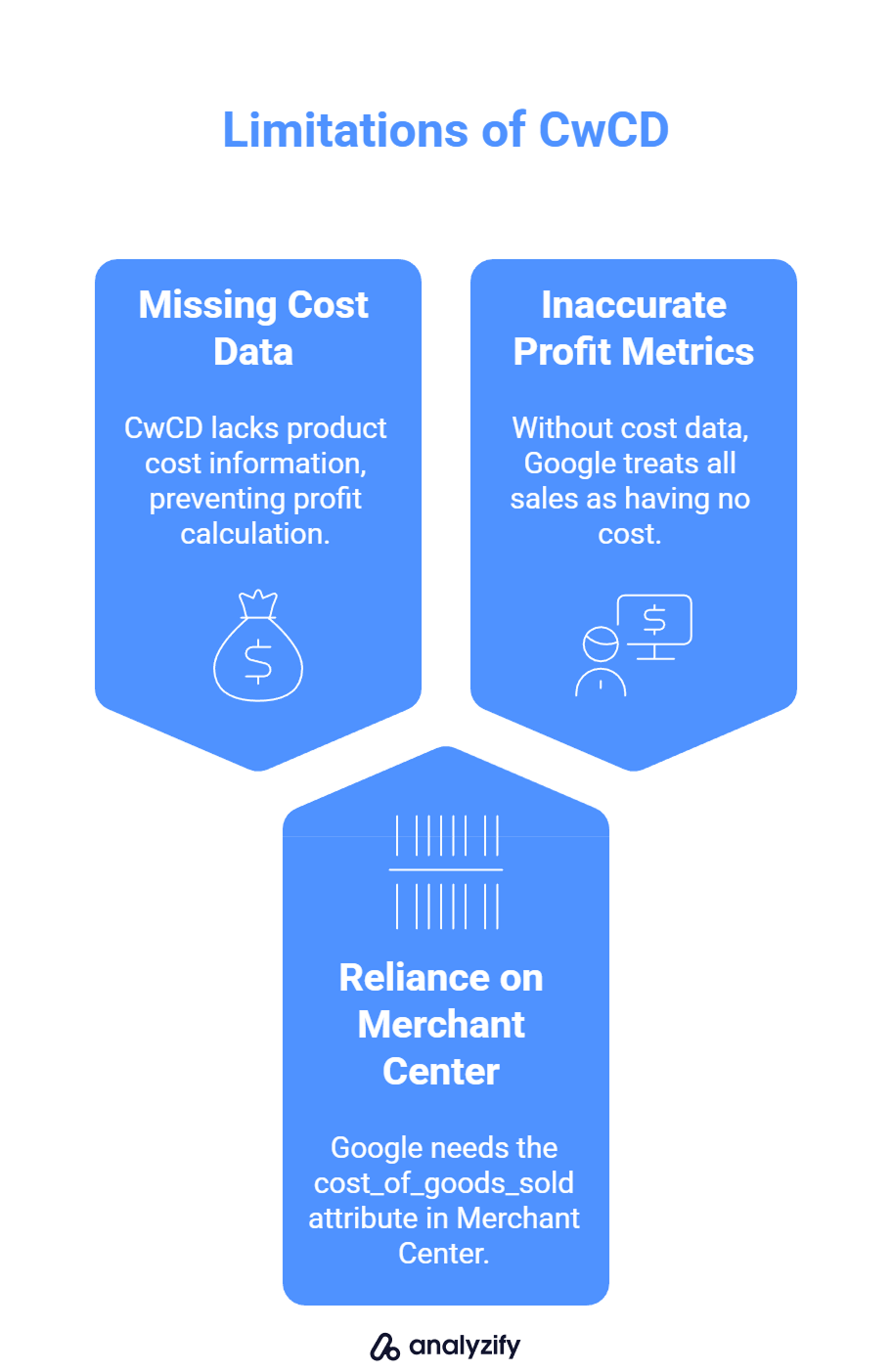
Google relies on a separate data source for costs: the cost_of_goods_sold attribute in your Merchant Center feed. Without this attribute, every sale is treated as if it has no cost, which means Google cannot calculate gross profit, gross profit margin, or any profit based metric.
CwCD Only Tracks What Was Bought, Not What It Cost You
The CwCD parameters include product IDs, quantities, and prices, but there is no field for item cost. That information must already be in your feed.
CwCD sends item price, not item cost.
Google cannot infer your margins from revenue data.
Profit metrics remain unavailable until COGS is supplied.
Bonus: Set up Shopify COGS tracking in Google Ads to see real profit!
ID Consistency Determines Whether Profit Can Be Calculated
Even if you provide COGS in your feed, Google can only apply it if the product ID inside the purchase event matches the product ID in your feed. A mismatch makes the cost unusable.
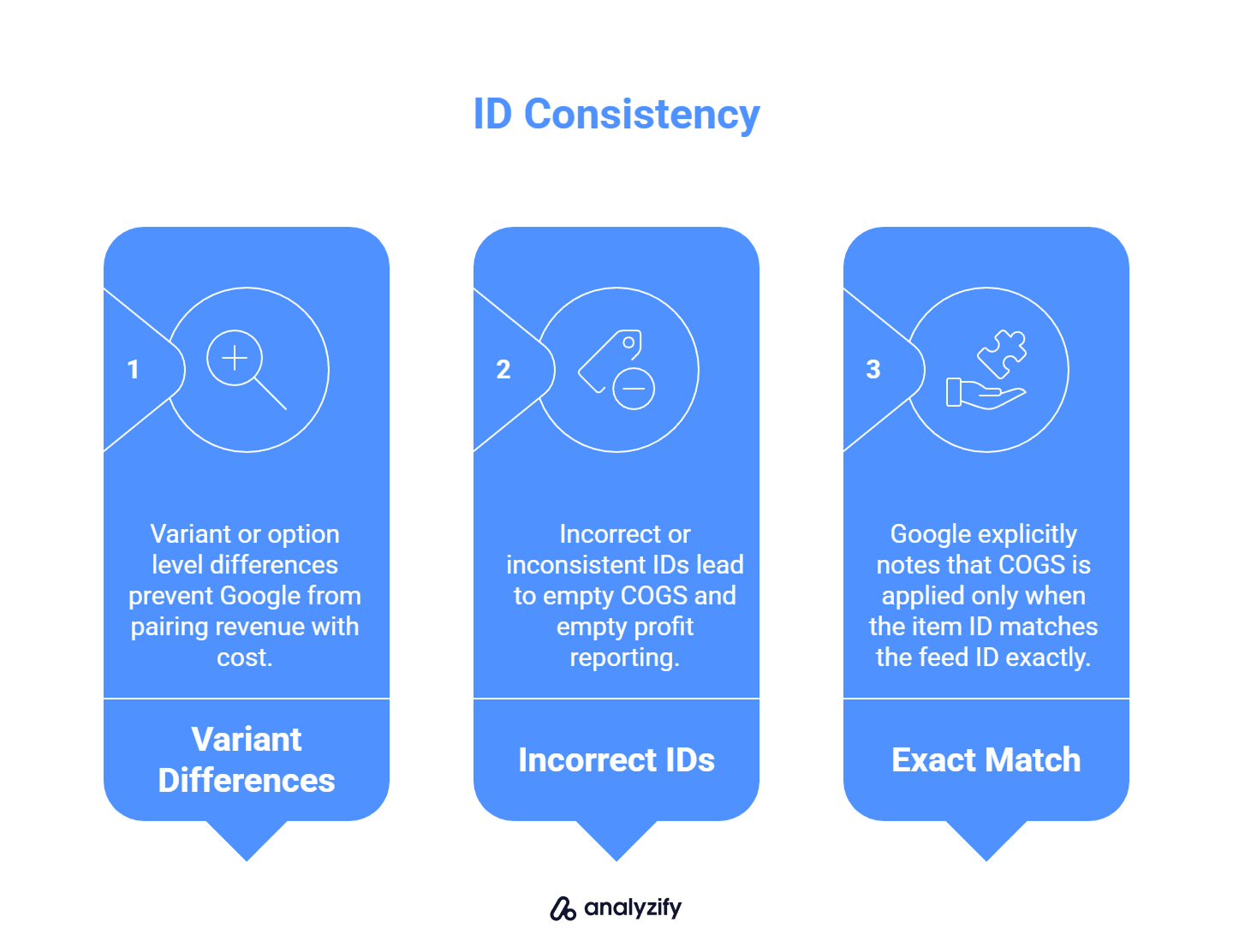
Variant level or option level differences prevent Google from pairing revenue with cost.
Incorrect or inconsistent IDs lead to empty COGS and empty profit reporting.
Google explicitly notes that COGS is applied only when the item ID matches the feed ID exactly.
In simple terms, CwCD tells Google what was sold, while your feed tells Google what those items cost you. Profit metrics appear only when both data sources align.
 Built for Shopify - No Dev Work Required - Fast Setup
Built for Shopify - No Dev Work Required - Fast Setup 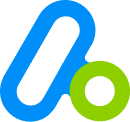
Missing Conversions in GA4 or Meta Ads?
Standart browsing tracking misses conversions - Analyzify adds Server-side tracking for accurate GA4 & Meta reports.How Profit Reporting Works When CwCD and COGS Are Combined
Once Google receives two pieces of information at the same time
the exact items sold in each order (from CwCD)
the cost of those items (from your Merchant Center feed)
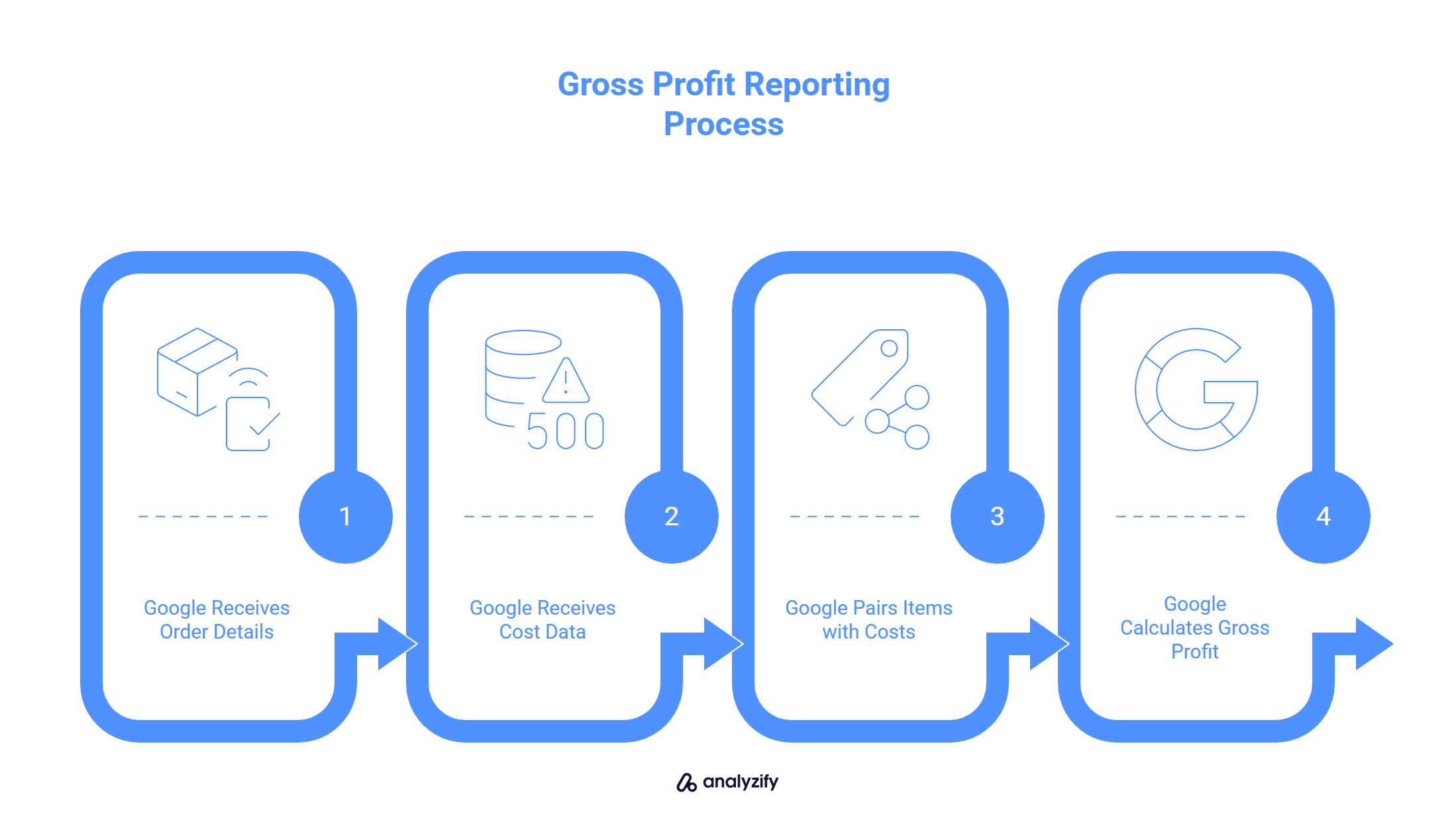
it can finally calculate the metrics you cannot get from revenue alone. This combination is what transforms your reporting from surface level results into actual profitability insights.
Google pairs each item in the cart with its corresponding cost and performs a simple but decisive calculation: item revenue minus item cost = item level gross profit.
Item Level Profit Becomes Visible
Each product in the order is evaluated individually. This is where CwCD’s item list and your feed’s COGS intersect.
![]()
Google subtracts COGS from the revenue of each specific item.
Items without a COGS value are skipped rather than estimated.
Profit accuracy depends entirely on the precision of your feed data.
Google Calculates Profit Based on the Actual Cart, Not the Advertised Product
Because CwCD shows the full cart, profit is calculated on all items the user purchased, not just the item that triggered the click.

Lead profit reflects the advertised product.
Cross sell profit reflects the additional items the user bought.
This distinction lets you understand which products quietly drive high margin orders.
Profit Metrics Become Available in Google Ads Columns
Once revenue and cost are matched at item level, Google populates several new fields for your campaigns, groups, and product data.
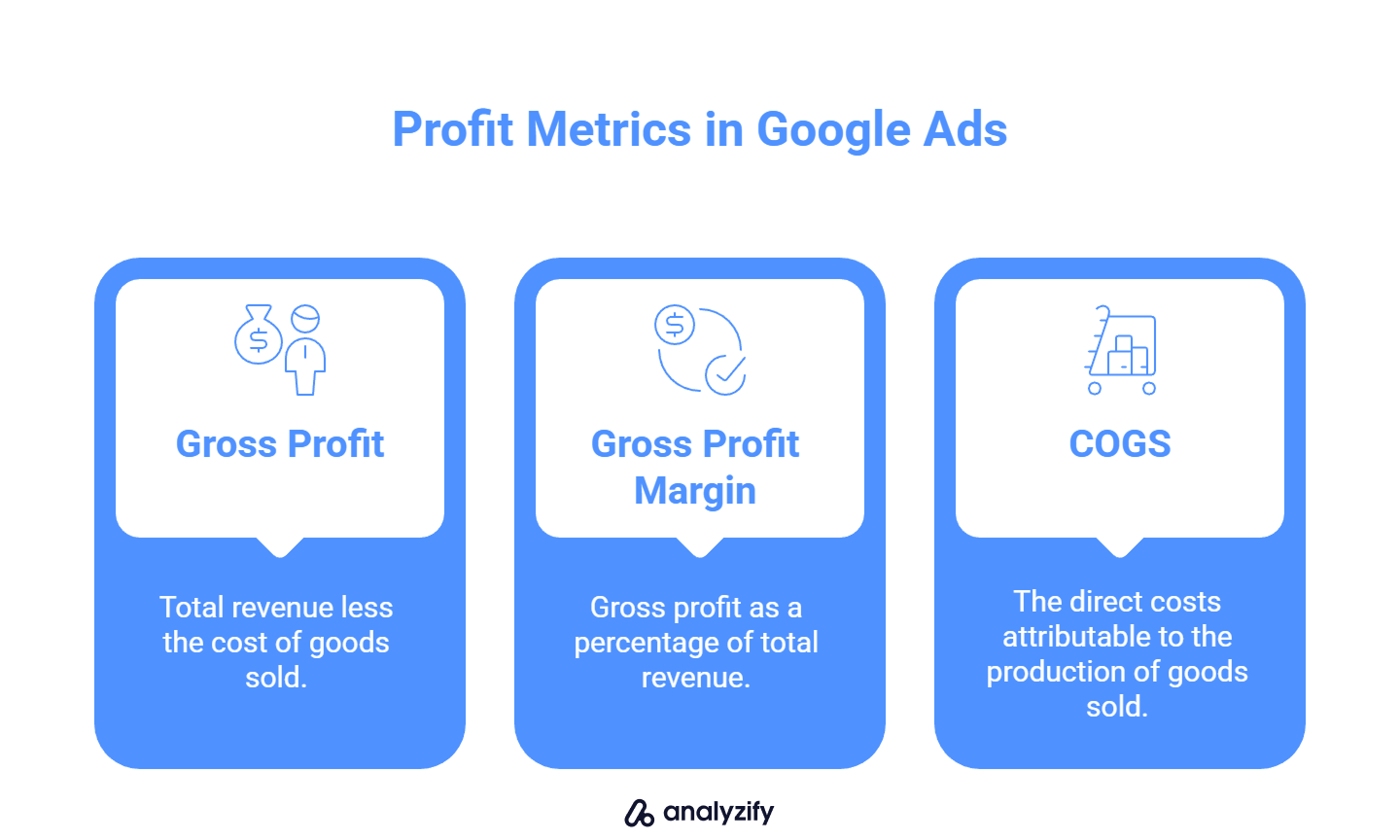
Gross profit
Gross profit margin
COGS for sold items
These metrics shift your reporting away from “how much you sold” to “how much you kept”, giving you a measurable view of the real financial impact of your ads.
How Analyzify Provides the Data Foundation for CwCD and Cost Based Reporting
For profit reporting to work correctly, Google needs clean item level purchase data that matches the products in your Merchant Center feed. If your events send the wrong IDs, incomplete item details, or inconsistent pricing, Google cannot connect your orders with the information in your feed and your reporting becomes unreliable. This is where Analyzify gives you a stable foundation.
![]()
Analyzify structures your purchase events in the exact format Google expects, including consistent product and variant IDs, correct item arrays, and precise price and quantity values. This gives Google a complete view of each cart so it can interpret your orders accurately and connect them with the cost values from your feed.
Accurate Item Level Events That Work Seamlessly With CwCD
Analyzify sends the full contents of every order, including all purchased items, their quantities, discounts, and currency. This allows Google to read your cart as an item list rather than a single revenue number. With this structure in place, Google can determine which products belong to the order and evaluate them individually.
Correct Product and Variant IDs for Feed Alignment
Profit reporting only works when the item ID inside your purchase events matches the item ID inside your product feed. Analyzify prevents mismatches by sending IDs that match your Shopify catalog and Merchant Center structure. This alignment ensures Google can actually pair your orders with your cost values.

Support for Enhanced Conversions to Improve Attribution Quality
Analyzify supports Google’s Enhanced Conversions, which enrich your attribution using hashed first party data such as email. This helps Google identify users more accurately and improves the quality of your conversion reporting, especially in restricted browser environments.
Profit Metrics Available Inside Analyzify’s Marketing Analytics Dashboard
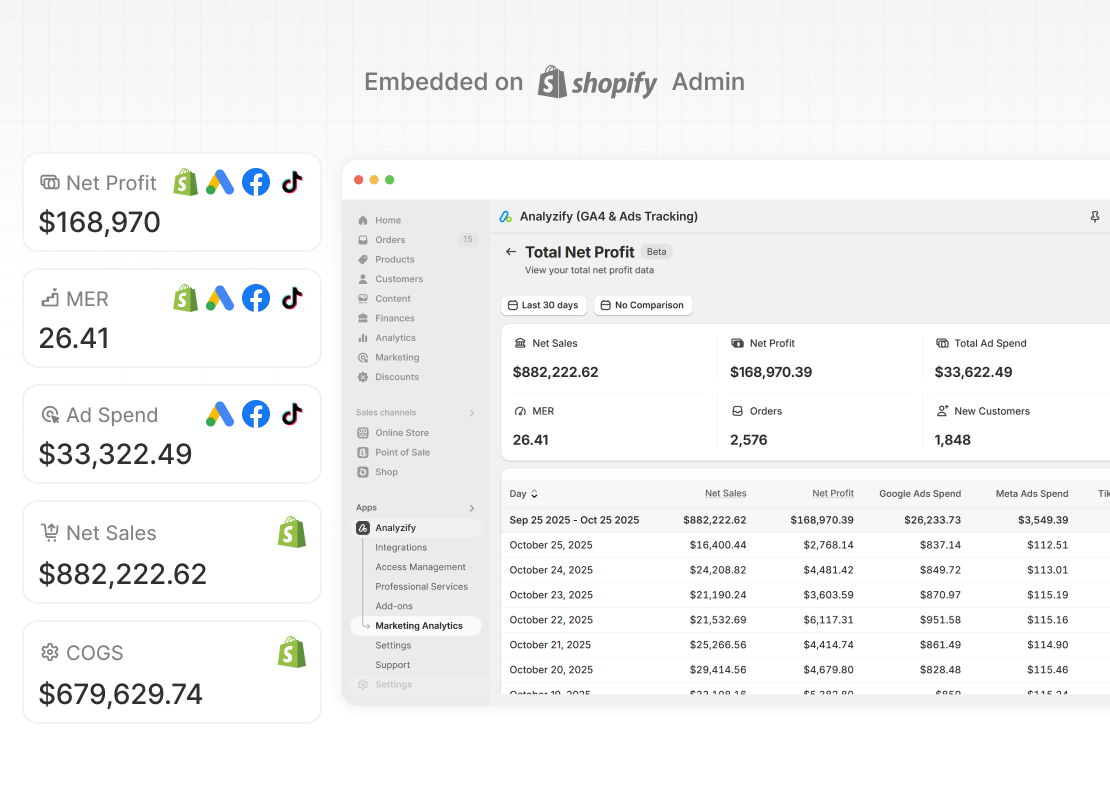 Even when your Google Ads account lacks complete profit reporting, you can still see your financial performance inside Analyzify. The Marketing Analytics Dashboard combines multiple data sources, allowing you to follow:
Even when your Google Ads account lacks complete profit reporting, you can still see your financial performance inside Analyzify. The Marketing Analytics Dashboard combines multiple data sources, allowing you to follow:
product level COGS
Marketing Efficiency Ratio
campaign level profitability
combined revenue and cost data in one place
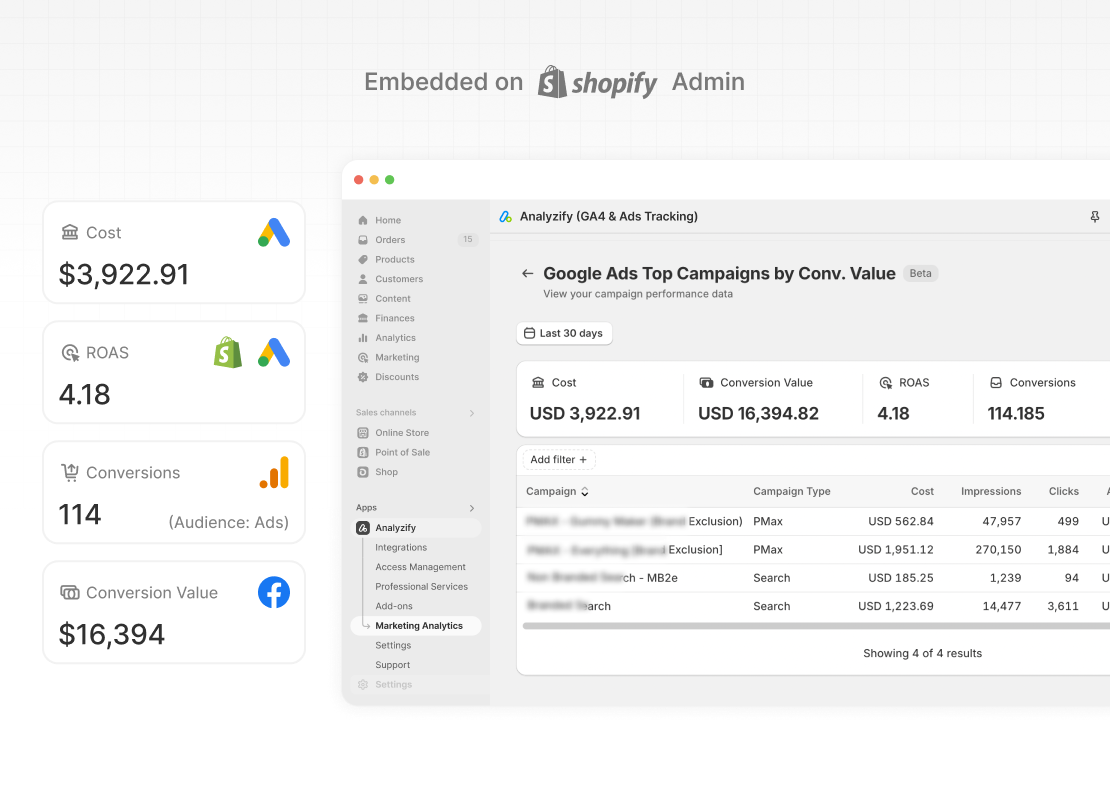
This gives you a single panel where you can evaluate the financial impact of your ads without waiting for Google Ads to populate every profit column.
Bonus: Learn how to track COGS in Shopify and connect it to Google Ads
With this tracking foundation in place, Google can interpret your orders correctly and apply your feed’s cost values to calculate item level profit. The next section explains how these profit insights change the way you adjust budgets, evaluate campaigns, and decide where to invest.
Conclusion: Why Profit Focused Tracking Should Be Your Default Approach
When your Google Ads reporting includes item level costs, profit, and margin data, you stop relying on assumptions and start seeing the financial outcome of every click. You can spot which campaigns actually make money, which products drive meaningful value, and where your budget delivers the strongest return. Instead of following revenue signals, you make decisions based on real financial impact.
 Built for Shopify - Profit Tracking - Accurate Insights
Built for Shopify - Profit Tracking - Accurate Insights Merchant Center won’t show profit in Google Ads
Analyzify sends COGS data with every Shopify purchase event, so Google Ads finally reports profit - not just revenue.Analyzify gives you the tracking structure that makes this possible and brings COGS, MER, and product level profitability into a single view through the Marketing Analytics Dashboard. With accurate purchase events and clean item data, your Google Ads reporting becomes more reliable and far easier to interpret.
If you want to build a setup that supports profit based decisions from day one, you can book a demo and see how Analyzify works for your store.































